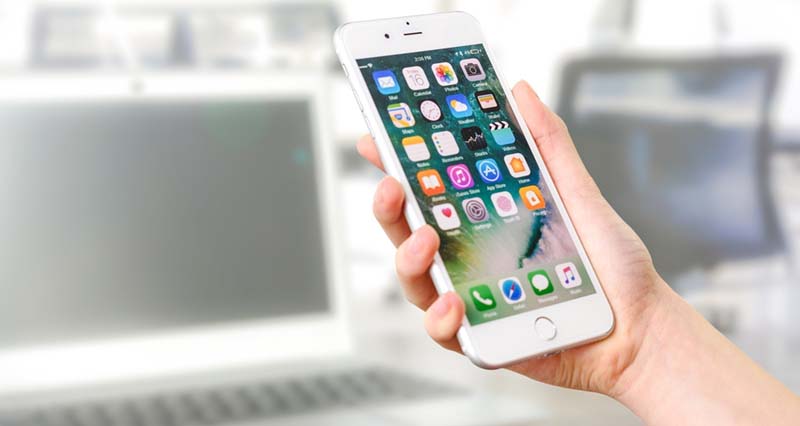Caution
“By all means let’s be open-minded, but not so open-minded that our brains drop out.”
— Richard Dawkins
The courses I teach in speed reading are based on psychology, physiology, optics, biology, a bit of neuroscience and a large dollop of common sense. To paraphrase Isaac Newton, I’m standing on the shoulders of giants - Evelyn Wood and Tony Buzan. There is no spooky mumbo-jumbo or deliberately confusion inducing jargon.
There are many alternative Speed Reading organisations which do not share this philosophy of clarity and pragmatism. In this blog post I discuss my opinions on PhotoReading and Speed Reading apps. Both have merit to an extent, but I believe have limitations and are over hyped. Finally, I talk about the absolute fraud of blindfold reading. I urge you to take overblown claims with a pinch of salt before deciding to spend your hard-earned money.
Photo Reading

Photo reading was developed by Paul Scheele and claims to increase reading rate to 25,000 words per minute. It is the subject of much marketing hype. Basically, what you are doing is getting in a relaxed state of mind, previewing the book, skimming, formulating questions then scanning. Finally you review your questions and create a Mind Map. These are all perfectly normal information gathering study techniques and can be very effective for getting a good overview of a book.
Where PhotoReading differs is the process of entering the ‘PhotoFocus’ relaxed state with your eyes defocused and turning each page at a consistent pace (roughly a page a second). This step of PhotoReading is said to be an unconscious process of assimilation.
I have yet to find any evidence that this has any validity. We have never seen PhotoReaders at the World Speed Reading Championships with any appreciable comprehension of a novel. If anyone can prove it gives good comprehension across a range of different texts I will gladly introduce it into my courses. PhotoReading was evaluated for NASA Ames Research Centre by Dr Danielle McNamara from the Psychology Dept of Old Dominion University. The analysis concluded,
“The results for all measures yielded no benefits of using the PhotoReading technique. The extremely rapid reading rates claimed by PhotoReaders were not observed; indeed, the reading rates were generally comparable to those for normal reading. Moreover, the PhotoReading expert generally showed an increase in reading time when using the PhotoReading technique in comparison to when using normal reading strategies to process text. This increase in reading time when PhotoReading was accompanied by a decrease in text comprehension.”
See the more details of the report here: https://ntrs.nasa.gov/citations/20000011599
There’s an App for That

When Steve Jobs sadly died in 2011, cartoonists saw a funny side to the tragedy. The New Yorker magazine cover and other publications showed Jobs at the gates of heaven, with St. Peter consulting his book. Jobs armed with an iPad says, “I have an app for that.”
There are 2.87 million apps available for download on the Google Play Store alone. There are apps for almost anything you can think of with Speed Reading being no exception. I am not a Luddite, despite not owning a smartphone [The main reason is, where I live in rural countryside there is no mobile signal – I use my iPad or laptop to access the internet via WiFi.] I love tech but not for its own sake. My belief is that technology should only be used if it makes life easier. For example, take the self-service supermarket checkouts. If you’re buying anything more than a few items they can be more trouble than they’re worth. If the store has a ‘five items or less’ checkout with a human assistant, that will be faster and more efficient. I’m sure the supermarkets would argue that self-service checkouts offer convenience for their customers but I think it’s a cunning ploy to have fewer staff wages to pay. The question is, do speed reading apps make life easier? If you are only reading digital documents then perhaps you could argue they have a place. A major problem if you use both printed and digital media is that it is not a transferable skill. Boosting your speed with many of the online reading apps will not help you to read faster on paper.
Most apps work by a system known as Rapid Serial Visual Presentation (RSVP), in which individual words, or blocks of two or three words, appear one after the other in the centre of your screen at a specified number of words per minute. The “Spreeder” app allows you to choose the number of words you see at each moment, and to vary the rate at which these words come at you. Some of the other apps have pre-sets. One of the leading brands called “Spritz” offers successive individual words in which one letter, just before the midpoint of each word, is highlighted in red, keeping your focus on that precise point on the screen (the “Optimum Recognition Point”).
In their favour the apps keep your focus on the text; reduce the duration of your fixations (the necessary short time that the eye pauses to take in a word); enforce a steady rhythm and prevent you from back skipping or re-reading. However, there are also many drawbacks.
I’m not an optometrist, but I suspect focusing in the centre of the screen for long periods of time without moving your eyes could lead to serious issues. If you’re not using the muscles which control the movement of the eyes then it seems to be likely, just as with any other muscles in the body, lack of use leads to deterioration and weakening. This is only conjecture though.
One aim of the apps is to eliminate sub-vocalisation (hearing the words in your head as you read). When scientists tried to get people to eliminate sounding words subliminally in their heads – by having them constantly hum while reading, for example – comprehension dropped dramatically. When I teach Speed Reading, sub-vocalisation is managed but is never completely removed because of the comprehension issue.
A second major problem is that showing words in isolation or in very small groups of two or three leads to disconnection. With ‘traditional’ Speed Reading words are taken in as meaningful chunks. These can be up to six words long with practise. The brain is able to connect and assemble these into meaning far more effectively than individual words.
Thirdly, speed reading apps completely disregard peripheral vision. Although not in sharp focus, peripheral vision acts as a very useful preview of structure and review of what has just been covered. This aids both comprehension and memory. Each eye has 130 million light receivers in its retina. Your clear focus amounts to only 20% of these. The remaining 80%, or 104 million light receivers are devoted to peripheral vision.
It is perfectly possible to achieve the same level of speed without using an app. You also have better comprehension and the ability to use the techniques with paper documents or reading from screens. Thus my test of “does it make your life easier?” is not really satisfied.
Blindfold Reading

The Star Online, digital companion to Malaysia's The Star newspaper reports on blindfolded reading for students. The article was published on 30th December 2006 so it was not an April Fool’s joke. It’s actually a serious 11-hour course originated by Vincent Lim which he had conducted for five years previously.
According to the Star, “The Year One pupil … went through some English essays and newspapers quickly. She read them correctly despite the fact that she was blindfolded.”
Lim says, “When the students first come to my class, I will initiate their mental energy, which means I will transfer my energy to their brain. Then, their brain will be full of energy and when that happens, they can use their left or right brain, or the whole brain.”
There is so much wrong with this! Motivation, relaxation and focus are all important factors in reading. Speed Reading is indeed a whole brain process but that’s only as far as this bears any resemblance to reality. It is utter nonsense and trickery to suggest that you can read whilst blindfolded. The illusion is often simply achieved by peeking through the gap between the nose and eyes in a badly fitted blindfold. The notion of transferring energy between brains is also deeply flawed. One person may motivate another but the electrical and chemical activity is generated within the brain and cannot be transferred or ‘filled up’.
It is not just prevalent in Malaysia. There are also many similar programmes in India dressed up with a nonsensical, pseudoscientific rationale. It has become a competitive and lucrative market with several players. ‘MBM Midbrain Master Training Center’, a Bangalore based firm, offer programmes with titles including, ‘ESP Photographic Memory’ and ‘ESP Quantum Speed Reading’. ‘ESP’ is an abbreviation for ‘Extra Sensory Perception’ – the ability to gather external information without the help of our five known senses.
ESP and ‘remote viewing’ were fanciful dreams of the US military during the Cold War. After spending $20 million David Goslin, of the American Institute for Research said, "There's no documented evidence it had any value to the intelligence community." The CIA project was abandoned in 1995.
Skeptic and ‘Myth buster’, Professor Narendra Nayak, President of Federation of Indian Rationalist Associations (FIRA) launched a nationwide campaign to raise public awareness and combat the menace of ESP and Midbrain Training fraud.
“Teaching children to lie at a very young age is the real tragedy of this bogus scheme,” says Prof. Nayak, “Even worse than that is that the parents are made to collaborate with the perpetrators of this fraud. Every parent has a desire for his or her child to be a genius. As a result they are often predisposed to not see the reality or to believe that something exists while it is not really there. This fundamental weakness in the parent’s mental make-up is being exploited by the fraudsters.”
It is so sad that fraudulent claims can be taken seriously by many otherwise sensible, rational people. It preys unfairly on parents’ loving desires to give the best head-start in education for their children and devalues the ‘true’ Speed Reading practitioners. If something seems too good to be true, it usually is. It pays to be cautious.


